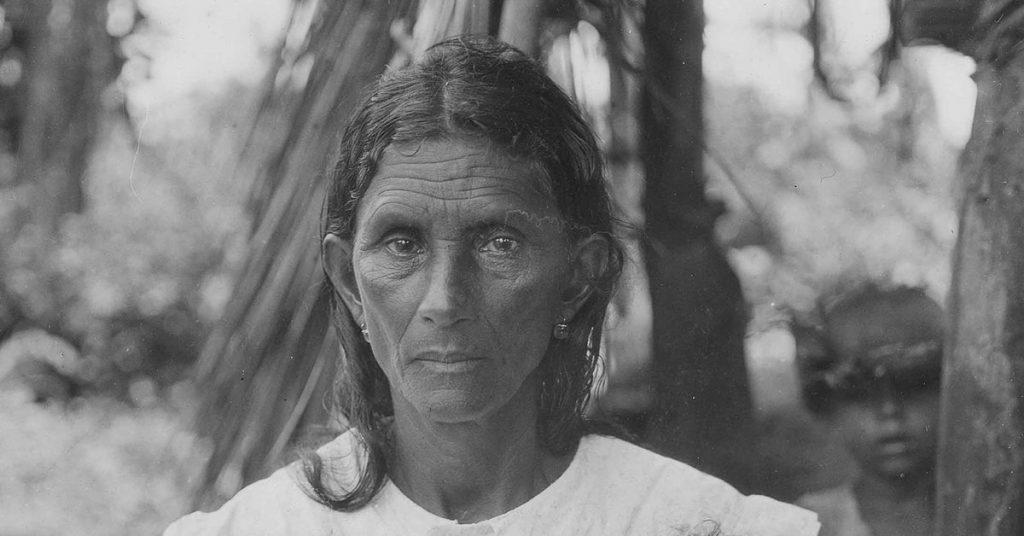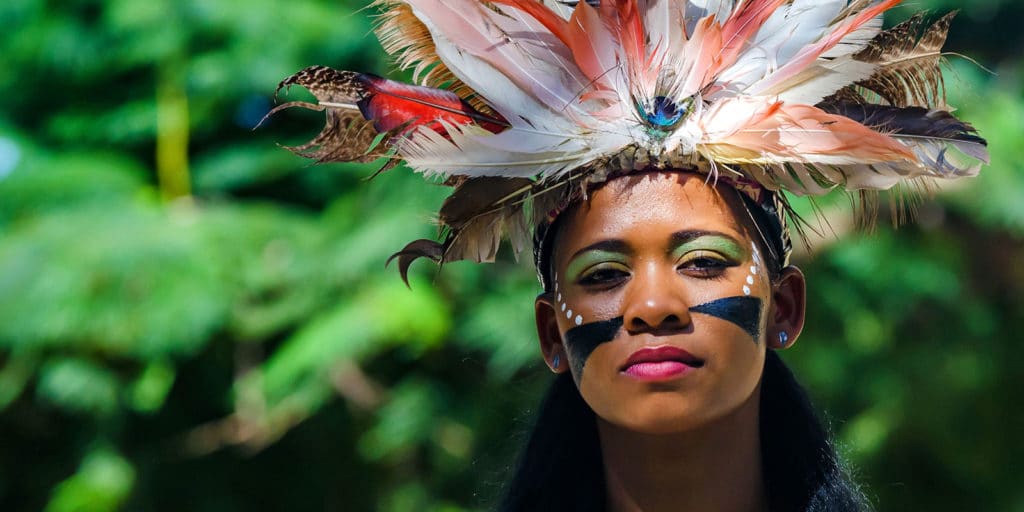Taíno are an Indigenous Caribbean people.
The island of Hispaniola (Haiti/Dominican Republic) is the center of the Taíno homeland, with communities in Eastern Cuba, Puerto Rico and the Bahamas. It is believed that we originated in Venezuela’s Orinoco River Valley. We followed the Lesser Antilles north to the Greater Antilles.
Taíno Culture in New York City
The best places in New York City to see Taíno culture are at El Museo del Barrio in El Barrio East Harlem, and at the Smithsonian Museum of the American Indian in the Alexander Hamilton U.S. Custom House in the Financial District.
The Custom House was built on the site of the Indigenous Lenape trading post at the southern tip of Manhattan.
A Peaceful People with a Developed Social Structure and Strong Women Leaders
Taíno were a peaceful people with a highly developed social structure.
It is notable for its women caciques (community leaders). The town and county of Loíza, Puerto Rico is named for a Taíno woman cacique named Loaíza or Yuíza.
Taíno community life was organized around food. Caribbean family life is still structured that way. New York City’s bodegas (corner markets) are a continuation of these traditions.
All of these Taíno characteristics are still true of New York City’s Caribbean communities.
We Are Still Here
Though the Dominican Republic is the Taíno heartland, today Taíno is more often associated with Puerto Ricans who recognize our heritage.
A mitochondrial DNA genetic study of Puerto Ricans in 2000 revealed our heritage as 62% Indigenous, 30% African and 8% European. Indigenous and African peoples mixed together in the mountains where we escaped the colonizers.
The study was done by Juan Carlos Martínez Cruzado, PhD, Professor of Genetics at the University of Puerto Rico, Mayagüez Campus. It was funded by the National Science Foundation.
The colonizer’s story is that we were killed off, but it is the most cynical lie. We are still here. We have always been here since the beginning of human time in the islands.
The reality is that we intermarried. In the human pattern of colonizers everywhere in the world, colonizer men took Taíno women. Some of it was probably forced. In the Spanish of Spain cojer, means “to take” as in to take the bus. In the Americas, cojer means “to take” as in to have sex. The form changed to I’m taking you (like it or not). But our genes survived. You can recognize Taíno ways in Puerto Rican culture today. We are still here.
The Taíno Beauty

This is a detail from a photo of a Cuban Taíno woman from the Taíno: Native Heritage and Identity in the Caribbean exhibition (2018-2019) at the Smithsonian National Museum of the American Indian.
Look at her. Once you know her, you will recognize her face in many Puerto Ricans and people around the Caribbean.
She is very beautiful with a long face and strongly angled jaw line. This is the face of Taíno deities represented in ancient Zemi sculptures of Taíno spirits. It is the face of El Yunque, the sacred mountain of Puerto Rico, where the weather and hurricanes rise.
It is the face of many Caribbean beauty queens. It is the Taíno face. We know it isn’t politically correct to characterize people by their looks, but after we saw this photo and other old photos of Taíno families, we were very surprised to see her everywhere.
Taíno and Carib
After the Taíno migration to Cuba, Hispaniola, Puerto Rico and the Bahamas, another Indigenous group, the Carib, followed the same path. Carib are in the Lesser Antilles (from Trinidad to the Virgin Islands).
If you leave Puerto Rico for the Virgin Islands (the northernmost of the Lesser Antilles), you will notice that the local people change. The nearest Virgin Islands are Culebra and Vieques, the popular vacation islands of Puerto Rico.
Carib are fierce fighters and in ancient times we were enemies. But in the Colonial Era we joined together on Culebra to fight the Spaniards.
Punta del Soldado (Soldier’s Point), the southernmost tip of Culebra must be a legacy of that time. From there, you can watch the seas for ships coming from Vieques or Puerto Rico.

